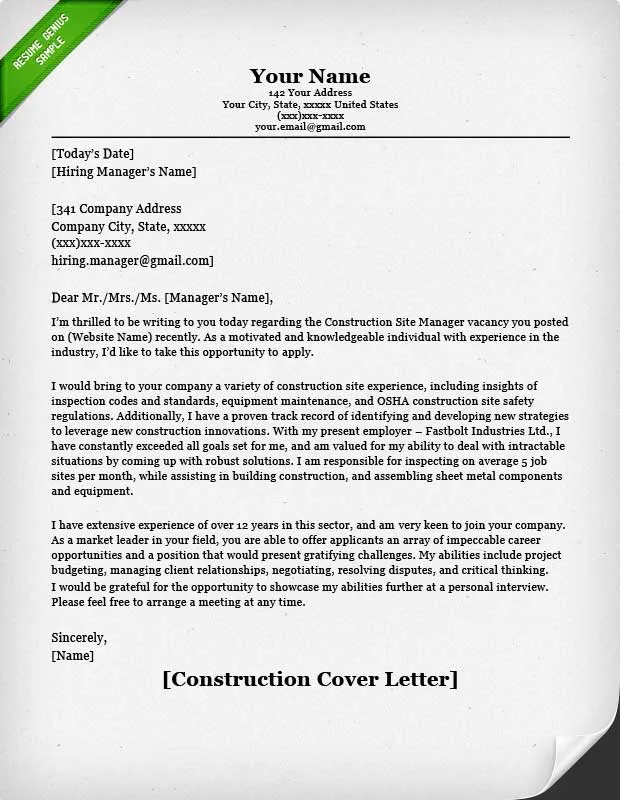What is a Cover Letter
A cover letter is a crucial document that accompanies your resume when applying for a job. It serves as an introduction, providing context to your application and highlighting your suitability for the role. Unlike a resume, which offers a factual summary of your qualifications, a cover letter allows you to express your personality, enthusiasm, and specific interest in the position and the company. It’s your chance to make a strong first impression and persuade the hiring manager to delve deeper into your qualifications.
Why Cover Letters Are Important
In today’s competitive job market, a well-crafted cover letter can significantly increase your chances of getting an interview. It demonstrates your genuine interest in the opportunity and provides an opportunity to expand on the information in your resume. Cover letters offer a platform to showcase your communication skills, explain any gaps in your employment history, and articulate how your skills and experiences align with the specific requirements of the job. They also allow you to demonstrate your understanding of the company’s values, mission, and culture, setting you apart from other applicants.
Key Components of a Winning Cover Letter
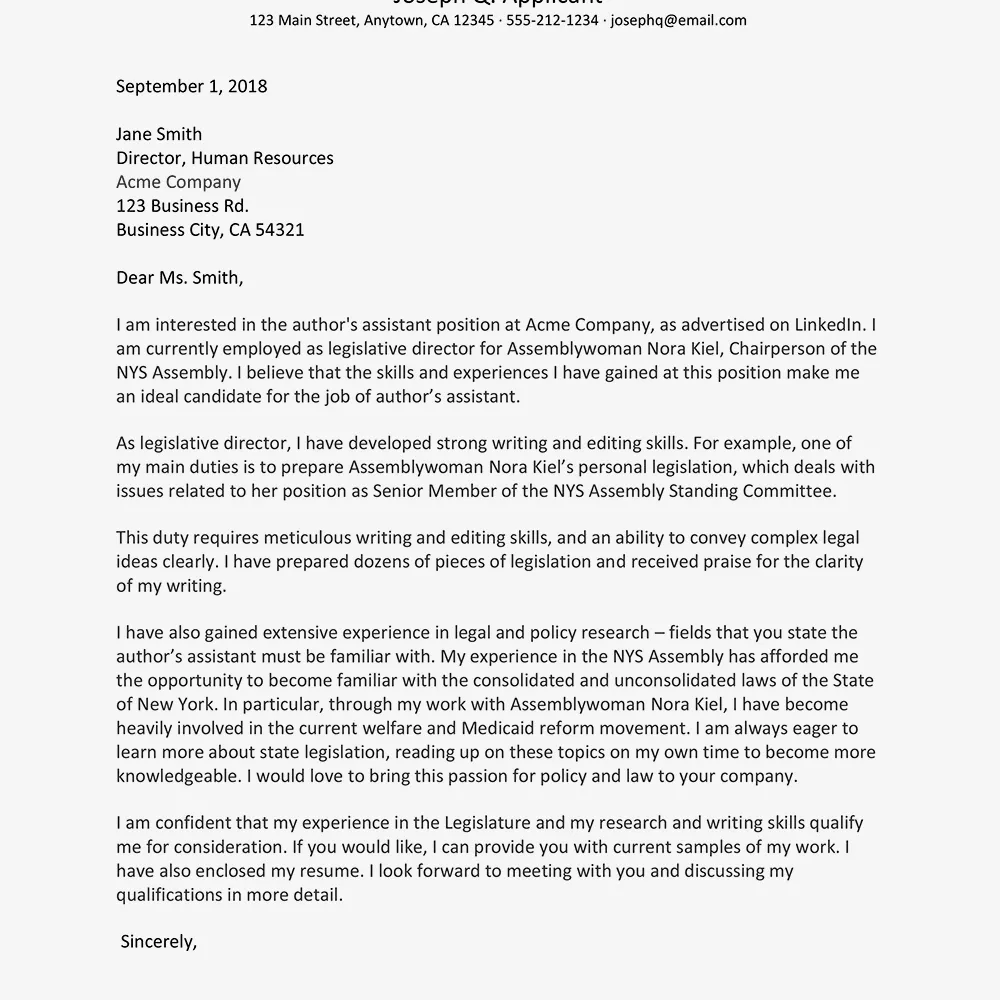
A compelling cover letter comprises several key elements that work together to create a persuasive and professional document. Each section plays a vital role in conveying your qualifications and interest. By mastering these components, you can ensure your cover letter effectively grabs the reader’s attention and encourages them to consider your application further.
Contact Information
Start with your contact information. Include your name, address, phone number, and email address. It should be at the top left or right corner of the document. This makes it easy for the hiring manager to contact you.
Greeting Your Recipient
Always address your cover letter to a specific person whenever possible. Research the hiring manager’s name and use a formal greeting like “Dear Mr./Ms./Mx. [Last Name].” If you can’t find a name, use a professional alternative like “Dear Hiring Manager.” Avoid generic greetings like “To Whom It May Concern.”
The Opening Paragraph
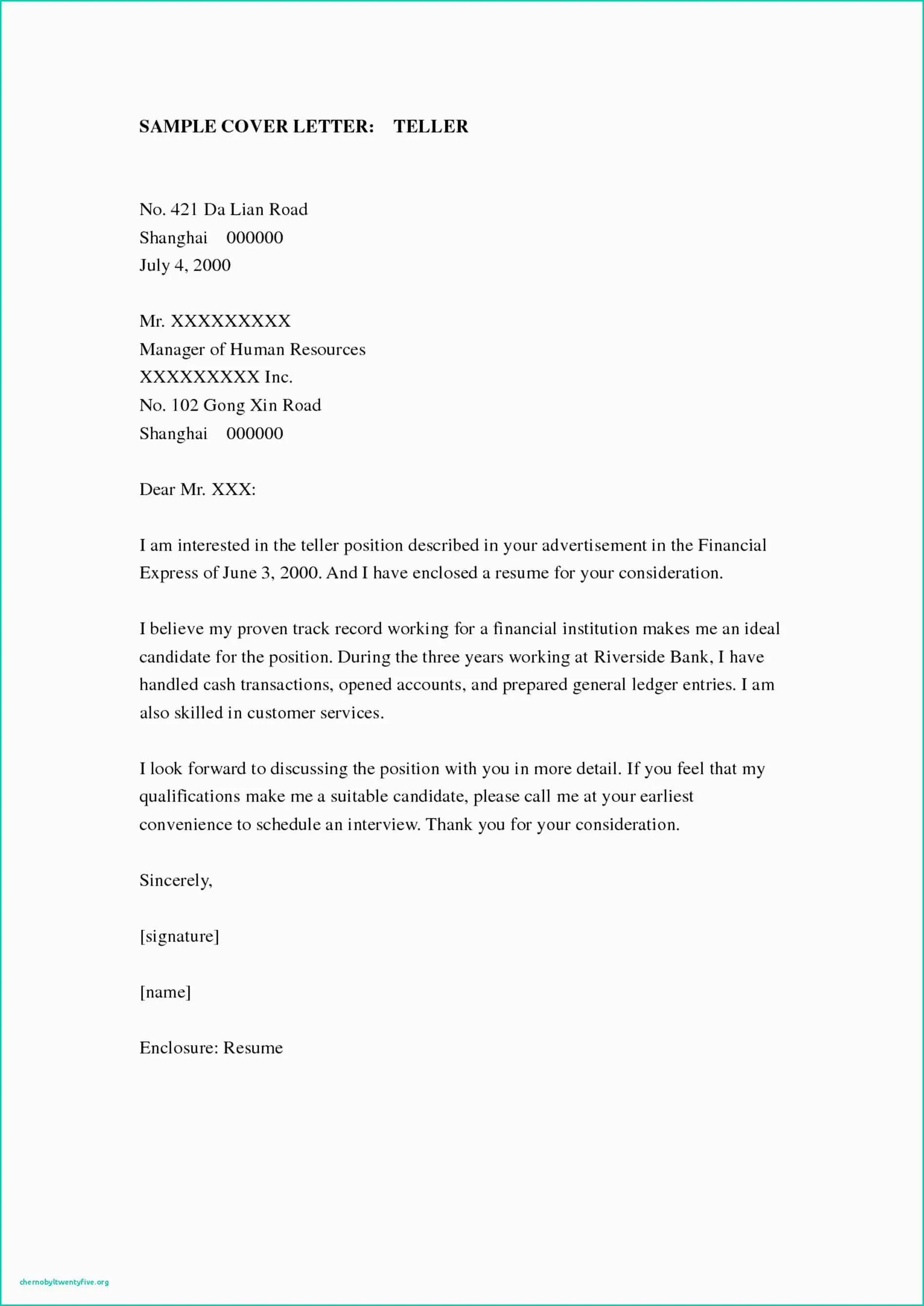
The opening paragraph is your hook. Immediately state the position you’re applying for and where you saw the job posting. Briefly mention why you’re excited about the opportunity and what makes you a strong candidate. Keep it concise and engaging to capture the reader’s attention from the start. This is the most important part, and sets the tone of the entire letter.
Highlighting Your Value Proposition
In the body of your letter, focus on why you are a good fit for the role and the company. Connect your skills, experiences, and achievements to the job requirements. Emphasize the value you can bring to the organization. Use keywords from the job description to demonstrate your understanding of the role and its needs.
Showcasing Your Skills and Experience
Provide specific examples of your accomplishments and how your skills align with the job’s requirements. Instead of simply listing your skills, describe how you have used them in the past to achieve positive results. This helps the hiring manager understand the practical application of your abilities.
Quantifying Your Achievements

Whenever possible, quantify your achievements with numbers and data. For instance, instead of saying you “increased sales,” state that you “increased sales by 15% in one quarter.” Numbers make your accomplishments more tangible and demonstrate the impact you’ve made in previous roles.
Demonstrating Company Knowledge and Interest
Show the hiring manager that you’ve done your homework. Mention something specific that resonates with you about the company, such as its mission, values, or recent projects. This demonstrates genuine interest and that you’re not just sending a generic application. Mention why you are interested and make yourself a good fit, this requires research, but it is a very important step.
Crafting a Strong Closing
Your closing paragraph should reiterate your interest and summarize why you are an ideal candidate. Avoid repeating everything; instead, offer a concise overview. Express your enthusiasm for the opportunity, and provide information for the next step.
Expressing Gratitude and Call to Action
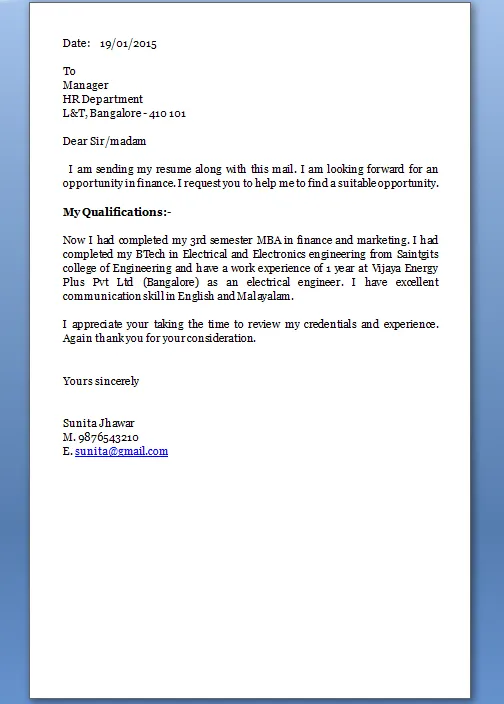
Thank the hiring manager for their time and consideration. End with a clear call to action, such as stating that you’re eager to discuss your qualifications further and are available for an interview. Include your contact information again, if needed. Close with a professional closing like “Sincerely” or “Best regards,” followed by your name.
Formatting and Design Best Practices
The format and design of your cover letter are just as important as the content. A well-formatted letter is easy to read and visually appealing, while a poorly formatted one can make a negative impression, even if the content is strong. The structure of your document is very important and can affect the decision of the hiring manager.
Font Selection and Readability
Choose a professional and easy-to-read font, such as Times New Roman, Arial, Calibri, or Georgia. Use a font size between 10 and 12 points. Make sure the font is consistent throughout the entire document to create a polished appearance.
Cover Letter Length and Structure
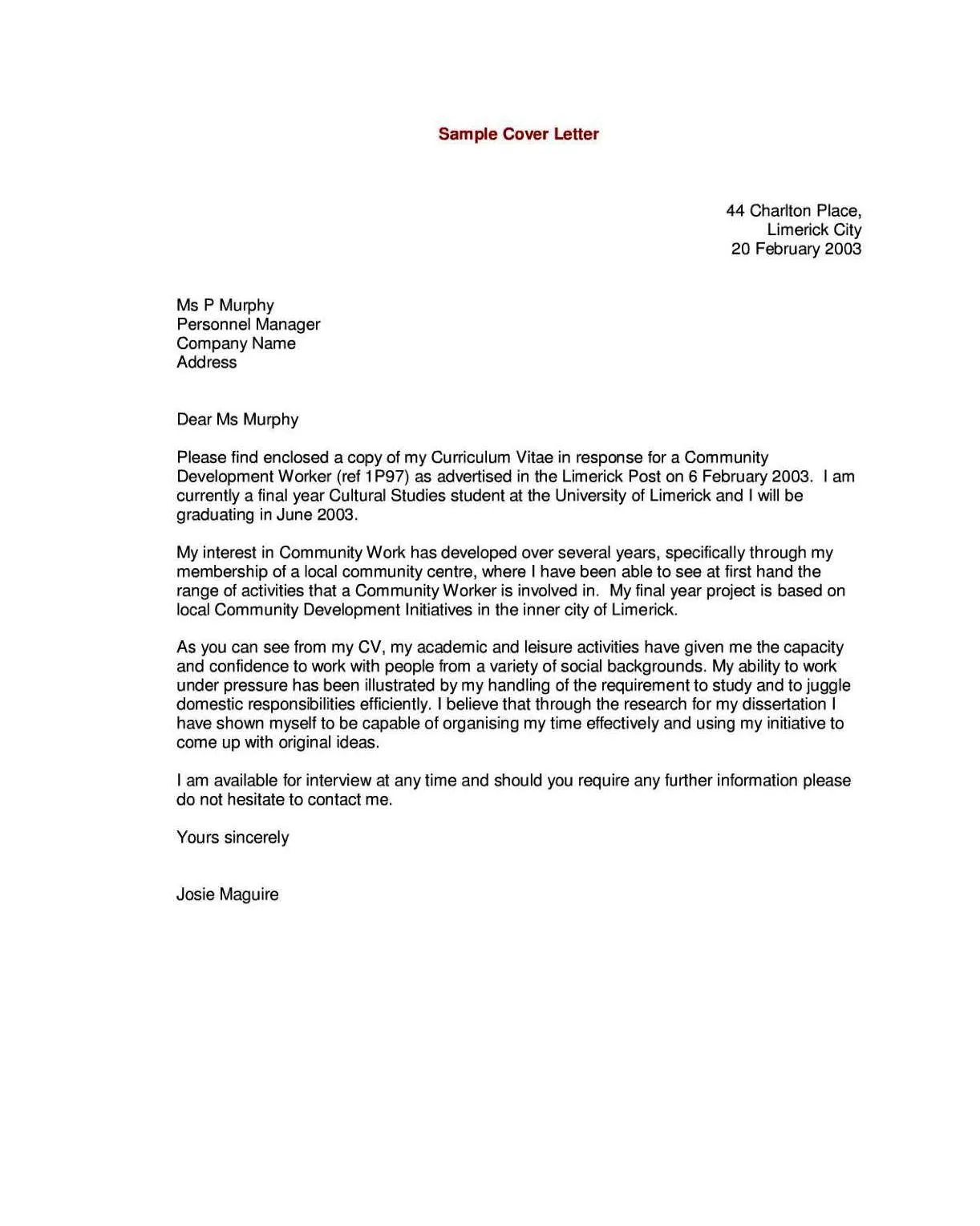
Keep your cover letter concise and to the point. Aim for one page. Structure your letter with clear paragraphs, making it easy for the reader to scan and understand the key points. Use headings and bullet points sparingly to highlight important information.
Proofreading and Editing
Always proofread your cover letter multiple times for grammar, spelling, and punctuation errors. Use a grammar checker tool and have someone else review your letter to catch any mistakes you might have missed. Errors can undermine your credibility and leave a negative impression on the hiring manager.
Avoiding Common Cover Letter Mistakes
Many applicants make common mistakes that can sabotage their chances of getting an interview. Being aware of these pitfalls helps you avoid them and present yourself in the best possible light. Take the time to make your document more appealing, and make the correct decision for the hiring manager.
Generic Language and Lack of Personalization
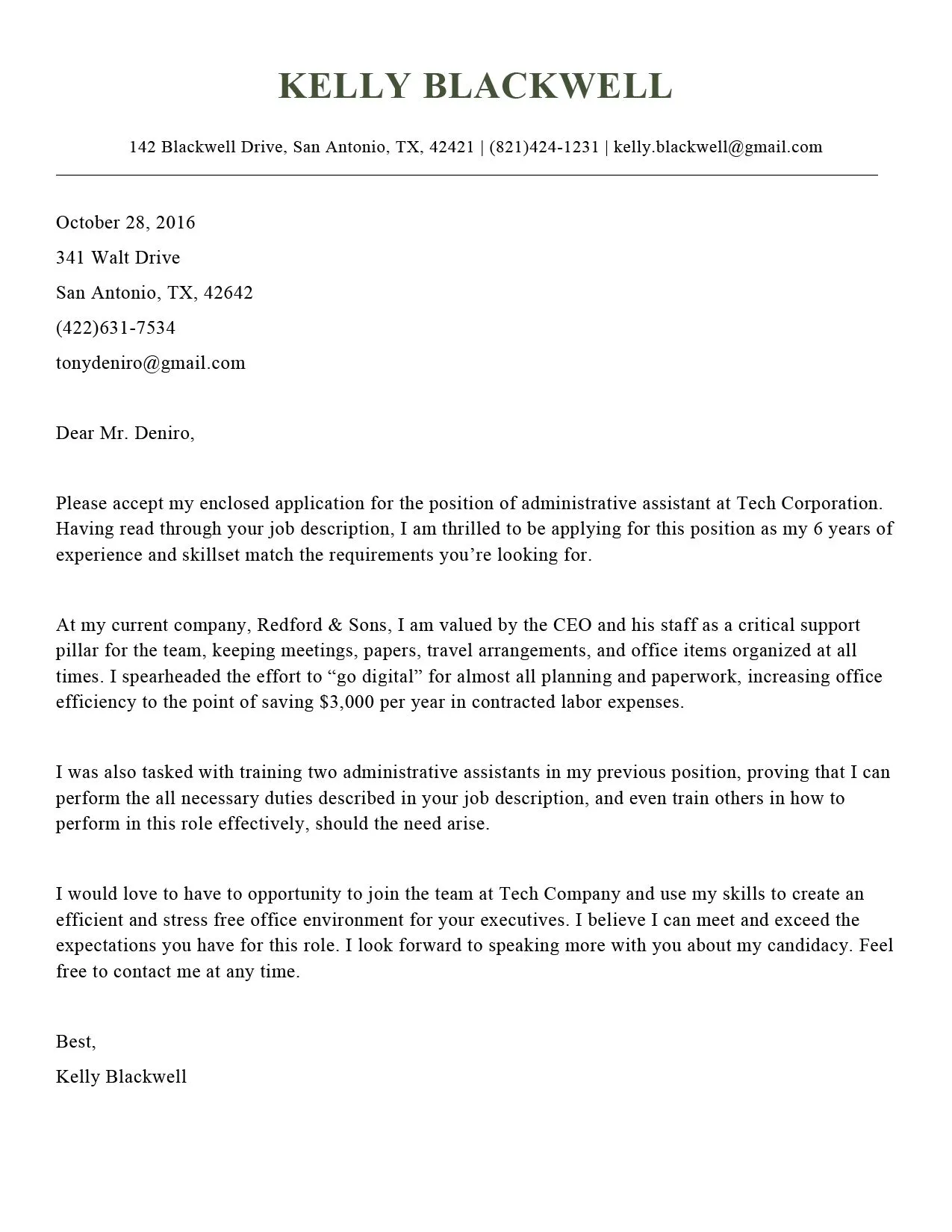
Avoid using generic phrases or templates that don’t tailor your application to the specific job or company. Hiring managers can easily spot generic cover letters. Always customize your letter for each position you apply for, highlighting your unique skills and experiences that are relevant to the job description. Showcasing your personality is important in a Cover Letter.
Typos and Grammatical Errors
Carelessly written cover letters with typos or grammatical errors suggest a lack of attention to detail. Always proofread your letter carefully before submitting it. Consider using grammar-checking software and asking a friend or family member to review it. These errors can make you look unprofessional, and they are very easy to avoid.
Focusing on What You Want
Your cover letter should focus on how you can benefit the company, not what you want from the job. While it’s okay to mention your career goals briefly, prioritize showcasing how your skills and experiences align with the company’s needs and goals. This is an important step, and many candidates get this wrong.
Tailoring Your Cover Letter
Customizing your cover letter for each application is essential. A generic cover letter that’s sent to multiple companies won’t make a strong impression. Tailoring shows your dedication and helps you stand out. Tailor the content to match each job description and the company’s values.
Researching the Company and Role
Before writing your cover letter, research the company thoroughly. Visit their website, read news articles, and check their social media to understand their mission, values, and recent activities. Also, carefully analyze the job description to identify the key skills and qualifications the employer is seeking. This research informs your cover letter, allowing you to demonstrate genuine interest and tailor your qualifications effectively.
Customizing Content for Each Application
Use the information you gathered through your research to customize your cover letter. Highlight the skills and experiences that align with the job requirements and the company’s needs. Explain how you can contribute to their success, and provide specific examples of your accomplishments. Tailor the language and tone to match the company’s culture.
Using Keywords Strategically
Incorporate keywords from the job description into your cover letter to demonstrate that you possess the necessary skills and qualifications. Review the job description carefully, and identify the key skills and requirements. Use these keywords naturally throughout your letter to show that you are a good fit for the role.
Cover Letter Examples and Templates
Reviewing cover letter examples and templates can provide valuable guidance and inspiration. These resources offer insights into structure, tone, and language. Consider using these resources as a foundation and customizing them to fit your specific situation.
Example Cover Letter 1
An example cover letter is provided, showcasing a candidate applying for a marketing position. It highlights the candidate’s marketing experience, skills, and their understanding of the company’s brand. The example demonstrates how to present accomplishments and demonstrate a fit for the role.
Example Cover Letter 2
A second example cover letter, targeting a project management role, is provided. The letter showcases the candidate’s project management skills and experience, emphasizing their ability to manage projects and deliver results on time and within budget. The example highlights the importance of using data and numbers.
Example Cover Letter 3
The third cover letter example illustrates how to apply for a customer service position. This example emphasizes customer service experience, communication skills, and the candidate’s ability to resolve customer issues effectively. The letter demonstrates how to show a genuine interest in helping customers.
Tools and Resources for Cover Letter Writing
Several online tools and professional services can assist you in crafting a compelling cover letter. Consider leveraging these resources to improve your writing and increase your chances of success. These tools are very helpful when writing the cover letter.
Online Cover Letter Builders
Online cover letter builders offer templates, formatting assistance, and content suggestions to help you create a professional cover letter. These tools can guide you through the writing process, allowing you to easily customize the content to fit your skills and the job requirements. They will help you format, and can also help you write the content.
Professional Cover Letter Review Services
Consider using professional cover letter review services. These services offer expert feedback on your cover letter, ensuring it is well-written, error-free, and tailored to your target job. A professional can help you fine-tune your letter, making it even more effective. It can be an excellent investment and a way to perfect your letter.
Final Tips for Cover Letter Success
Crafting a great cover letter takes time and effort, but it’s a crucial step in your job search. Here are a few final tips to help you succeed. Take the time to craft a good document and follow these suggestions.
- Always tailor your cover letter to the specific job and company.
- Proofread carefully for any errors in grammar, spelling, and punctuation.
- Use a professional and easy-to-read font.
- Keep the letter concise and to the point, aiming for one page.
- Quantify your achievements whenever possible to demonstrate your impact.
- Showcase your personality and enthusiasm for the opportunity.
- Use keywords from the job description to highlight your skills.
- Express gratitude and include a call to action, such as offering to schedule an interview.
By following these guidelines, you can create a cover letter that grabs the hiring manager’s attention, showcases your qualifications, and significantly increases your chances of landing an interview. Good luck with your job search!
